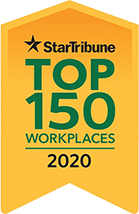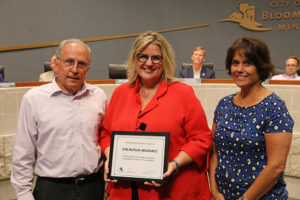 BLOOMINGTON, Minn., June 25, 2020 — SFM ranked ninth among medium-sized employers in the Star Tribune’s Top 150 Workplaces in Minnesota for 2020.
BLOOMINGTON, Minn., June 25, 2020 — SFM ranked ninth among medium-sized employers in the Star Tribune’s Top 150 Workplaces in Minnesota for 2020.
The Star Tribune’s top workplaces were chosen based on anonymous surveys of employees which asked them to rank their employers in areas such as quality of leadership, cooperation between departments, meaningfulness of work, appreciation from coworkers, positivity of workplace, flexibility in scheduling, level of pay and quality of benefits.
92% of SFM’s 250+ employees participated in the survey. Key findings include:
- SFM employees describe SFM as a caring, ethical, collaborative and supportive workplace
- SFM employees rate their job satisfaction 77 percent higher compared to similar business insurance companies
- 99 percent of employees feel well informed about important decisions at SFM compared to other business insurance companies
- 93 percent of employees believe that there is good interdepartmental cooperation at SFM
- SFM employees are engaged 9 percent higher than the industry benchmark
“I truly feel that we are the work comp experts because of our wonderful employees,” said Terry Miller, President and CEO. “Our employees are the heart and soul of SFM, and I believe they are the reason SFM is such a great place to work.”
SFM is known for its caring culture. We do this by helping employers keep safe workplaces, helping injured workers get their lives back, and making sure we take great care of our own employees.
“It’s wonderful to see that our employees feel good about working at SFM,” said Jody Rogers, Senior Vice President, Human Resources. “It’s always been our philosophy to take excellent care of our employees, and these survey results confirm that our efforts are being felt.”
The Star Tribune Top Workplaces designation is awarded based on the results of a survey of employees conducted by Energage, a company that specializes in employee surveys and conducts more than 66,000 annually.
View Star Tribune’s 2020 Top Workplaces article
View SFM’s Top Workplaces profile


